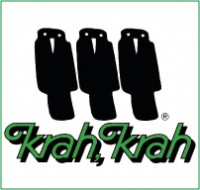Even a land-locked country like Austria can have its own Bermuda Triangle. In Vienna’s case, we are obviously not talking about the treacherous waters off the US Atlantic coast, nor is there – as far as I know – any paranormal activity involved.
The Austrian capital’s Bermuda Triangle (or Bermudadreieck in German) is not even shaped like one. It’s a section of prime real estate in the historical heart of Vienna. The St. Rupert Church (Ruprechtskirche) acts as its main landmark and this area is roughly located between the square known as Hohenmarkt (with its signature gilded Anker clock and one of Vienna’s most popular würstel stands) and the Schwedenplatz, with the adjoining Danube Canal.
This is Vienna’s elegant First District, which at one time contained the Jewish Quarter and still is home to the city’s main synagogue. In earlier times this was the location of the Roman military camp of Vindobona. St Stephen’s cathedral lies within a short walking distance (less than 10 minutes) and so do a number of celebrated Viennese sights.
More than a physical place, the Bermuda Triangle is a state of mind. This part of the city is synonymous with nightlife: lively restaurants and watering holes abound, both within its imaginary boundaries and in the adjoining streets of the city center. In recent years, the concept and atmosphere of the Triangle have progressively pervaded the neighboring area lying between the Judengasse and Rudolf Square to the north-west.
The evocative nickname dates back to some 30 years ago, when a smattering of bars, music clubs and restaurants opened in this area almost at the same time, and serious bar-crawlers started “disappearing” into them for hours on end. Unlike the sailors and fliers lost in the “real” Bermuda Triangle, the revelers would eventually head home at closing time, with scant recollections of what they had been up to and where.
If you visit Vienna’s Bermuda Triangle (and I strongly recommend you do), the classic bars and restaurants worth checking out are Roter Engel (Red Angel), Krah-Krah, Ma Pitom, Salzamt, and Philosoph, to name just a handful.
One more thing. What in Germany is called a Kneipe (roughly equivalent to a bar or p ub), in Austria takes the name of Beisl (pronounced bye-zul). Don’t go and cause a diplomatic incident on your first night out!
ub), in Austria takes the name of Beisl (pronounced bye-zul). Don’t go and cause a diplomatic incident on your first night out!
When I first moved to Vienna, my German – which I had studied in Heidelberg – was definitely Hochdeutsch (the formal version of the language) and I kept drawing suspicious stares from the locals until I mastered the Viennese vernacular and the Austrian vowel sounds. Several times in those early days I was asked if I was a “Piefke”, not exactly a term of endearment that Austrians reserve for Germans (Bavarians excluded).
